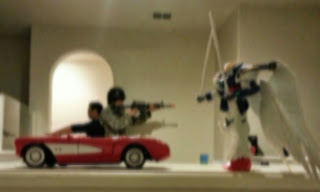Walter Benjamin's essay on Art in the Age of Mechanical Reproduction mentions the use of reproduction in Art and what that does to the work of Art itself. He states that for paintings, there is an aura that can be captured which cannot remain in reproductions. For Photography, however, Benjamin Walter states that there is no sense of aura to the photo because it is unlike a painting and has no real aura as it is simply a copy of something in real life. Yet, if he states that there is no aura to a photograph, does that mean that if there are reproductions of an image, it will not affect the photograph?
The photograph here is titled, "U.S. Marines raising the flag on Iwo Jima" (1945) The photograph was taken by Joe Rosenthal on February 23, 1945 and depicts five marines and one navy corpsman as they raise the flag on top of Mount Subirachi during World War II. What is beneath them is unclear, however, it depicts U.S. marines striving to raise the flag on top for the fight for freedom and the representation of the United States. The marines seem to be struggling to raise the flag but are determined. The weather behind them appears to be cloudy and it seems to be windy by the way the flag is moving in the wind.
I chose this photograph because it is one of the most popular and known photographs to ever exist. Since its publication, constant reproductions have been made from sculptures depicting the scene, to over a thousand reproductions made throughout the years. The image became so popular and significant that it even won the Pulitzer Prize for Photography. My question is, however, does a Photograph such as this depiction of war, which has become so renowned, lose it's significance after so many reproductions? Or does it instead strengthen its significance?



